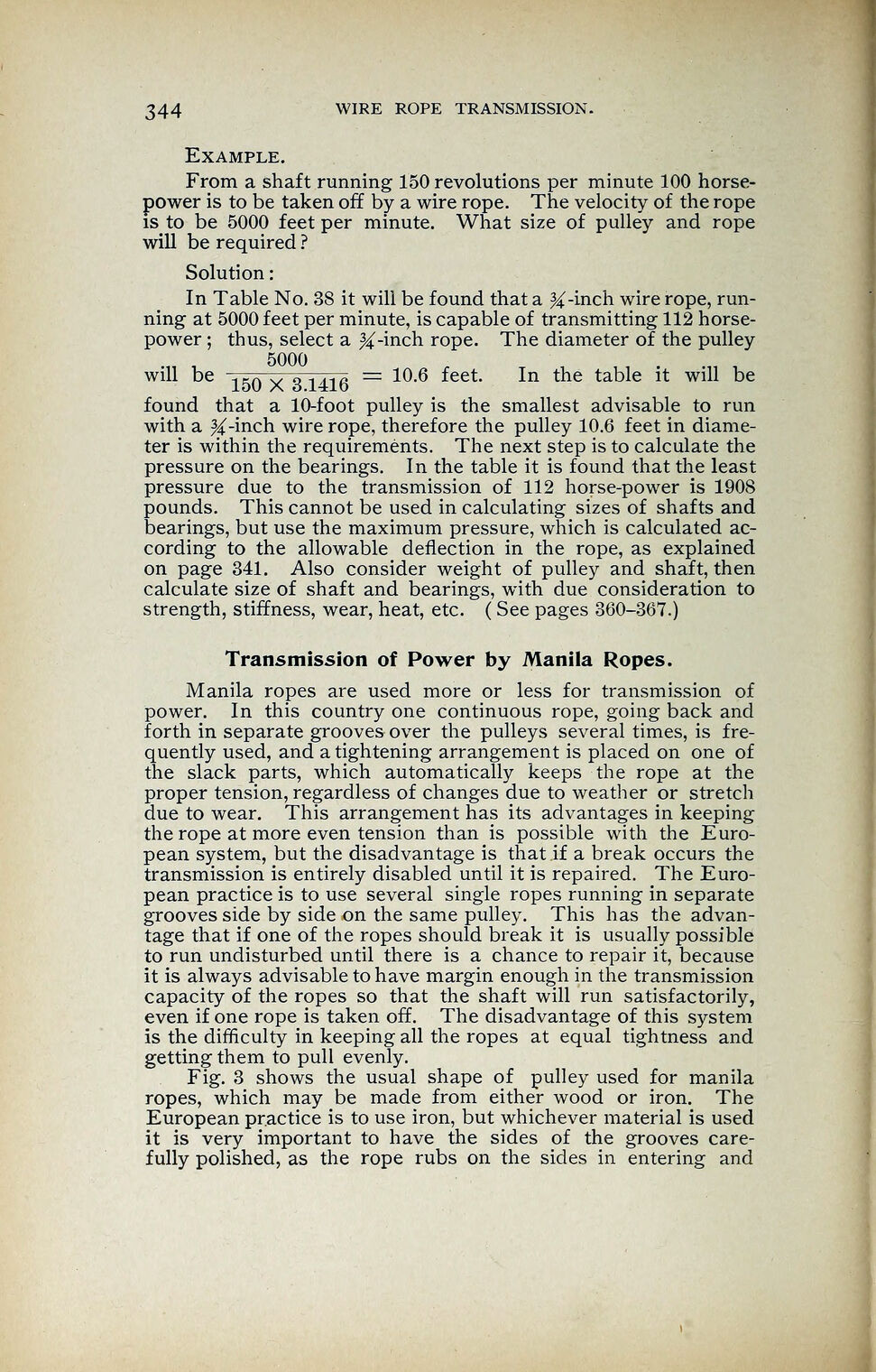
Full resolution (JPEG) - On this page / på denna sida - Rope Transmission - Deflection in wire ropes - Transmission of power by manila ropes

<< prev. page << föreg. sida << >> nästa sida >> next page >>
Below is the raw OCR text
from the above scanned image.
Do you see an error? Proofread the page now!
Här nedan syns maskintolkade texten från faksimilbilden ovan.
Ser du något fel? Korrekturläs sidan nu!
This page has never been proofread. / Denna sida har aldrig korrekturlästs.
344 wire rope transmission.
Example.
From a shaft running 150 revolutions per minute 100 horse-
power is to be taken off by a wire rope. The velocity of the rope
is to be 5000 feet per minute. What size of pulley and rope
will be required ?
Solution
:
In Table No. 38 it will be found that a ^-inch wire rope, run-
ning at 5000 feet per minute, is capable of transmitting 112 horse-
power ; thus, select a X_mch rope. The diameter of the pulley
will be 1 5Q x 3 1416
= 10’ 6 ^eet’
* n t^ie taD*e ** wn^ be
found that a 10-foot pulley is the smallest advisable to run
with a ^-inch wire rope, therefore the pulley 10.6 feet in diame-
ter is within the requirements. The next step is to calculate the
pressure on the bearings. In the table it is found that the least
pressure due to the transmission of 112 horse-power is 190S
pounds. This cannot be used in calculating sizes of shafts and
bearings, but use the maximum pressure, which is calculated ac-
cording to the allowable deflection in the rope, as explained
on page 341. Also consider weight of pulley and shaft, then
calculate size of shaft and bearings, with due consideration to
strength, stiffness, wear, heat, etc. ( See pages 360-367.)
Transmission of Power by Manila Ropes.
Manila ropes are used more or less for transmission of
power. In this country one continuous rope, going back and
forth in separate grooves over the pulleys several times, is fre-
quently used, and a tightening arrangement is placed on one of
the slack parts, which automatically keeps the rope at the
proper tension, regardless of changes due to weather or stretch
due to wear. This arrangement has its advantages in keeping
the rope at more even tension than is possible with the Euro-
pean system, but the disadvantage is that if a break occurs the
transmission is entirely disabled until it is repaired. The Euro-
pean practice is to use several single ropes running in separate
grooves side by side on the same pulley. This has the advan-
tage that if one of the ropes should break it is usually possible
to run undisturbed until there is a chance to repair it, because
it is always advisable to have margin enough in the transmission
capacity of the ropes so that the shaft will run satisfactorily,
even if one rope is taken off. The disadvantage of this sj^stem
is the difficulty in keeping all the ropes at equal tightness and
getting them to pull evenly.
Fig. 3 shows the usual shape of pulley used for manila
ropes, which may be made from either wood or iron. The
European practice is to use iron, but whichever material is used
it is very important to have the sides of the grooves care-
fully polished, as the rope rubs on the sides in entering and
<< prev. page << föreg. sida << >> nästa sida >> next page >>